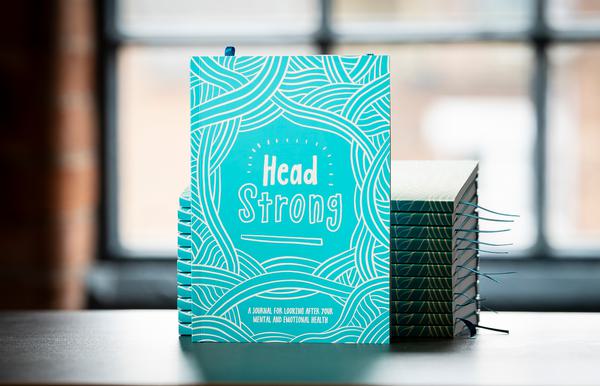New statistics confirm that self-harm continues to rise in England, with young people being particularly vulnerable; one in five young women reported self-harming in 2014. Lucie Shuker puts the stats into the context of other research and then SelfharmUK’s Jess Whittaker explores the factors that motivate self-injury and how loved ones can help.
Research from the Lancet Psychiatry Journal, published Tuesday, found that self-harm has risen across all ages and both sexes across England from 2000 to 2014. Across the whole population self-reported, non-suicidal self-harm (NSSH) has trebled from 2.4 per cent to 6.4 per cent, with those aged 16-24 showing the highest rates of practice.
Girls and young women (aged 16-24) are the most likely group to report self-harm: one in five (19.7 per cent) reported it in 2014, up from just 6.5 per cent reporting in 2000. For males in the same age group self-harm rose from 4.2 to 7.9 per cent over the 14 years. However, males and those aged 16-34 were less likely than women and older generations to have contact with relevant health services following incident of self-harm. Across men, boys, women and girls, the number of those reporting NSSH as an attempt to relieve emotional stress (e.g. anger, tension, anxiety, or depression) has increased.
There are a number of things to consider here, to help us understand the research. The first is that this data is actually nearly five years old, so it doesn’t tell us what is happening now. The second, is that it is primarily a study of adults, but shows that rates of self-harm are highest amongst older teenagers and young adults (16-24 year olds). We can put this in the context of other studies and see that there has been a rise amongst children and adolescents as well. Other research (Morgan et al., 2017) conducted during the same period (2001-2014) showed that rates of self-harm recorded by GPs among adolescents rose steeply, including a 68% rise in rates of self-harm among girls aged 13 to 16 between 2011-2014.
Analysis of the Millennium Cohort Study also reveals an increase in reported self-harm from 11.8% to 14.4% between 2005-2015 (Patalay and Gage, 2019), and there has also been an increase in hospital admission related to self-harm (Secondary Care Analysis, NHS Digital). Where we do have more recent research (NHS, 2017), it shows that 5.5% of 11 to 16 year olds and 15.4% of 17 to 19 year olds reported ever self-harming or attempting suicide - a substantial increase in late teenage years. All this suggests that worrying statistics aren’t just because of greater public awareness and more people seeking help, they also reflect higher levels of self-harm itself.
The Lancet Journal commented on its report, saying: “There are potential lifelong implications of NSSH, such as an increased frequency of suicide, especially if the behaviours are adopted as a long-term coping strategy. Self-harm needs to be discussed with young people without normalising it. Young people should be offered help by primary care, educational, and other services to find safer ways to deal with emotional stress.”
SelfharmUK’s Jess Whittaker responds below.
Self-harm, self-belief and hope in young people
There are lots of reasons why young people might choose to harm themselves. Self-harm is after all a way of coping with painful emotions and feelings, such as stress, anxiety, anger and guilt; which can be caused by a number of different situations, such as abuse, family, friendship or relationship breakdowns, school and exam pressures, bullying and social media. The other side of self-harm is that it’s an addictive behaviour. Once a young person learns it as a way they can escape from their emotional pain, it can often become the only way they feel they can do this.
Learned behaviours (even addictive ones) can be unlearned too. But it takes time and it takes practice. Replacing self-harm with a healthier way of coping with painful emotions, such as talking to other people and practicing self-care, doesn’t happen overnight. Relapse within self-harmers is common as they are crucially trying to replace one learned behaviour with another.
"Replacing self-harm with a healthier way of coping with painful emotions, such as talking to other people and practicing self-care, doesn’t happen overnight. Relapse within self-harmers is common as they are crucially trying to replace one learned behaviour with another."
All this being said, with any coherent understanding of why something is happening and method of how to change it, comes an imperative need to know how. What do young people need in order to stop self-harming? There will be lots of practical steps to take, but fundamentally young people need hope. They need to believe that they are capable of overcoming powerful cycles of harming. They also need to believe their situation can get better. That even though they can’t see a way out of whatever’s causing them pain right now, it won’t last forever and they will become a stronger person because of it.
However, they can’t do this alone.
Some may find help and support through an understanding GP, school nurse, teacher, youth worker or family worker, who can all refer on to CAMHS (Child and Adolescent Mental Health Service). There are also a number of private Counsellors, Clinical Psychologists and Psychotherapists who can offer specialist support. Online young people’s mental health support organisations include us here at SelfharmUK, Young Minds and Childline – who have recently started offering 1-1 chats with trained online counsellors.
But alongside specialist support, young people will need friends and family who listen without judging them, encourage them on their journey and help them not to give up when it gets hard. Churches too should be engaged with this conversation, and pastorally equipped to help vulnerable young people.
You can visit the selfharmUK website for more facts and information about self-harm, and to sign up for Alumina – our online self-harm support group.






